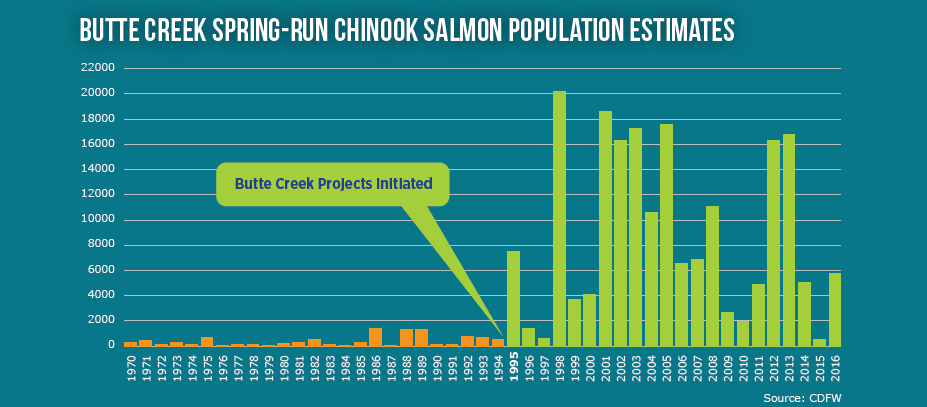David Guy is president of the Northern California Water Association (NCWA), an organization committed to ensuring that water supplies are available for the Sacramento Valley — both for today’s users and for future generations.
“The Sacramento Valley is a rich mosaic of farmlands, cities, rural communities, refuges, managed wetlands and meandering rivers,” David said. “Every drought we experience reveals numerous pressures on the water supplies that support this vibrant region. We have to be motivated and forward-thinking to advance the economic, social and environmental sustainability of the Sacramento Valley by enhancing and preserving its water rights, supplies and water quality.”
I recently had the opportunity to speak with David about his role at NCWA, some of the challenges that he and the region face, and how to prepare for the future. Here’s what David had to say.
1. Water is personal and sustainability is generational
The water leaders in the region – the farmers, conservationists, elected officials, water resource managers and business persons – all live, work, recreate and raise their families in the region. They drink the water, they learn about the landscape by spending time walking the fields and creeks, and they care deeply about the birds and fish that surround them every day. Many are fourth, fifth and now sixth generations of their families in the Sacramento Valley, and they all want to pass on the landscape in better shape to the next generations. As a result, they take the responsibility for sustainability very seriously and they work hard in this spirit.
2. We can’t take a single drop for granted
The greatest threat to the region is not recognizing that every drop of water in the Sacramento Valley serves multiple beneficial uses for cities, rural communities, farms, fish, birds and recreation. The essence of water management is serving water for all these different purposes, and at the right place and time of the year. We need to further recognize that any efforts to redirect water away from this region will adversely affect local businesses and communities, and jeopardize the environmental values.
3. Mimicking nature is a good place to start
We know that life depends upon the magical connection between water, land and sun. The Sacramento Valley is continually exploring new and innovative ways to enhance this connection, which seems to work very well in this region. Here, water managers are taking steps to mimic the various functions of traditional floodplains, which has multiple benefits for agriculture, wildlife, communities and our state’s groundwater supplies.
A good example of this is the Butte Creek Salmon Recovery Program. Starting 20 years ago, changes were made in different parts of the creek to improve every life stage for the spring-run salmon, and the fish have made an impressive and sustained recovery.

4. Collaboration is key
It takes a lot of hard work, major investments of both public and private dollars, and collaboration among diverse parties to achieve the desired conservation outcomes for both water resources and wildlife recovery. A ripe example of this is the concerted effort to implement the Sacramento Valley Salmon Recovery Program, with 14 projects completed in the last two years. Importantly, partners in the program are listening to and coordinating closely with each other, with biologists and other scientists, and with local, state and federal agencies.
With many conservation programs in the region being closely connected, partners of the salmon program are also collaborating with the Central Valley Habitat Exchange – a landowner incentive program supporting farmers’ and ranchers’ efforts to create habitat for a host of species, including Chinook salmon, Swainson’s hawk, giant garter snake, monarch butterfly and a number of riparian songbirds. These programs are proof that farms, fish and wildlife can work together in harmony and provide mutual support for each other, if we do the same.
5. Seemingly restrictive policies can inspire amazing innovations
The Endangered Species Act first emerged in the Sacramento Valley in 1989 with the emergency listing for the winter-run Chinook salmon. As you might expect, there was strong reaction at the time in the political, regulatory and legal arenas to oppose actions under the ESA. Since that time, the culture has changed dramatically and now the leadership and water resource managers work every day within the structures of the law to fix problems, manage water and provide solutions to benefit endangered species.
I have increasingly come to believe that the section 4 process in the ESA – the recovery planning section – is our best path forward as a society to accomplish recovery objectives and to build the collaboration necessary to achieve results on the ground. The Central Valley Salmon Habitat Partnership will be a further catalyst for these efforts.
6. If we take care of farmers and ranchers, they will take care, too
California’s farmers and ranchers have both an incredible legacy and future in California. They have continually evolved their practices and will continue to do so with the right economics and incentives. As long as farmers and ranchers are able to support their families and communities, and they are not threatened by outside forces, they will lead the way on conservation. It all comes down to their passion for the land, and their ability to farm and conserve in harmony.
7. Harmony is both the goal and the winning strategy
Nowhere else on Earth have I found a place like the Sacramento Valley, where the natural and human landscape can work together so effectively in harmony. Importantly, the region is bound together by its water resources and that harmony is dependent upon water serving multiple benefits. I get excited as the leaders in the region explore new ways to benefit farming and ecosystems, people and nature.
Related:
Crops, water and habitat: This California farmer’s winning trifecta >>
Relationships and incentives: My secret ingredients for better resource management >>
New online hub pairs landowners with conservation investors >>









